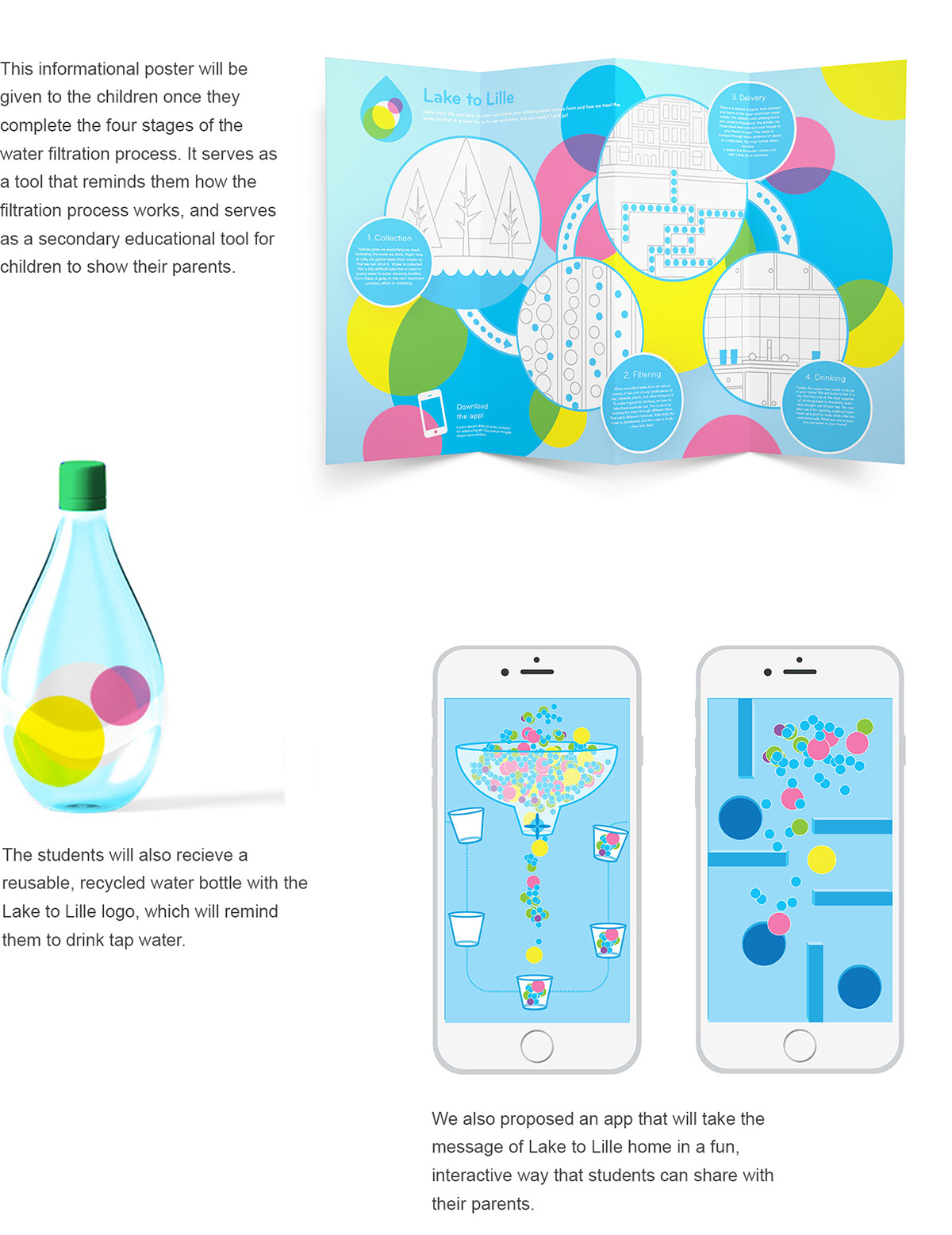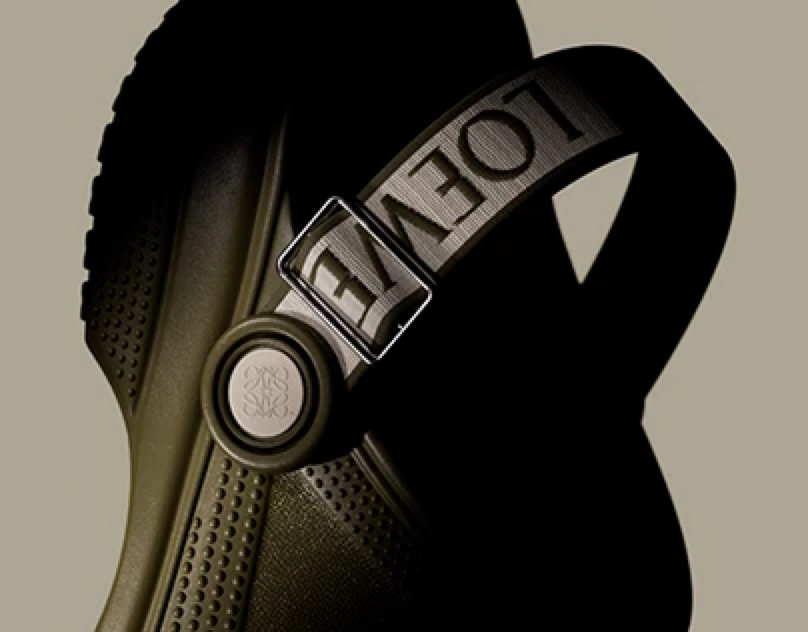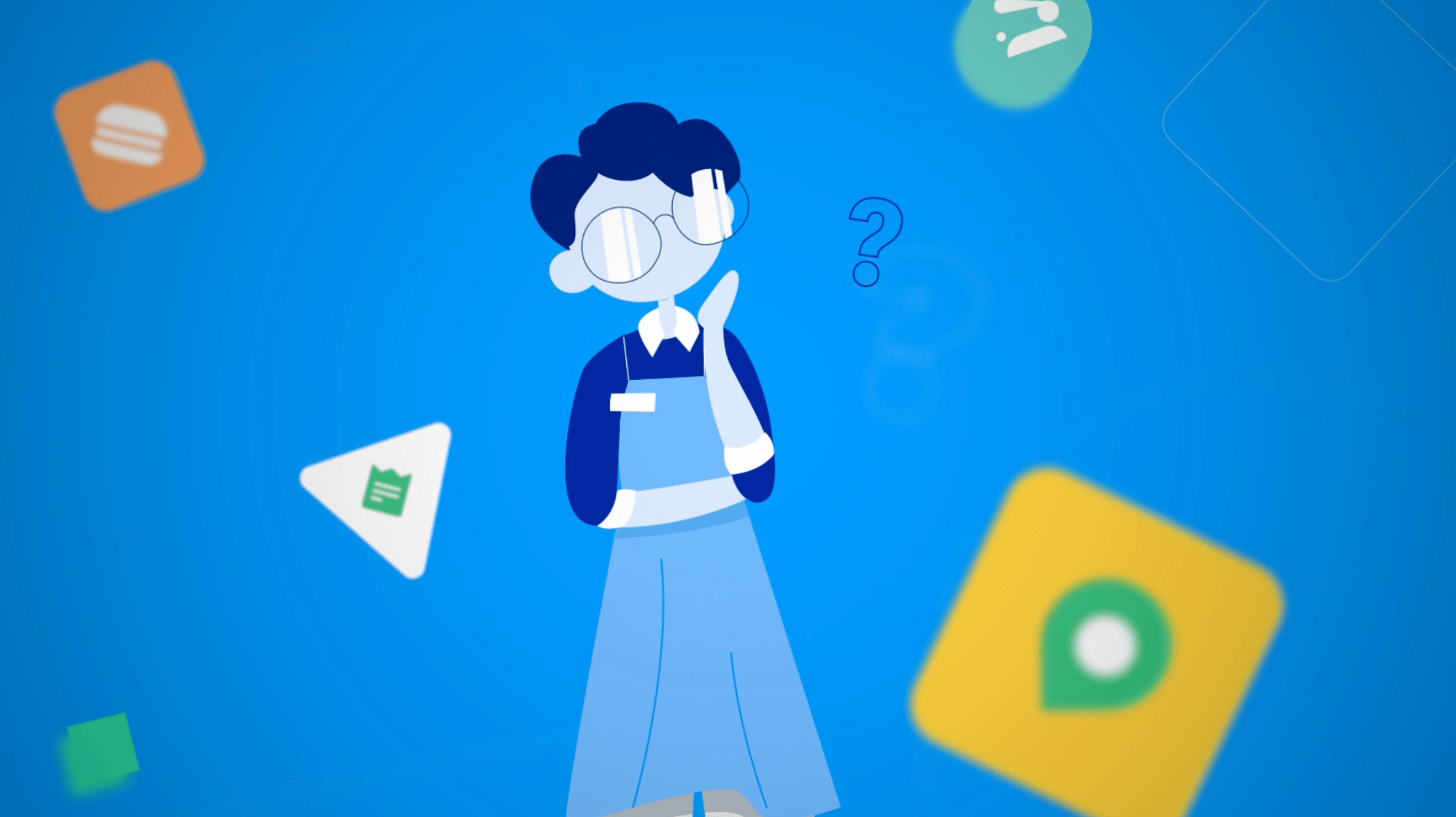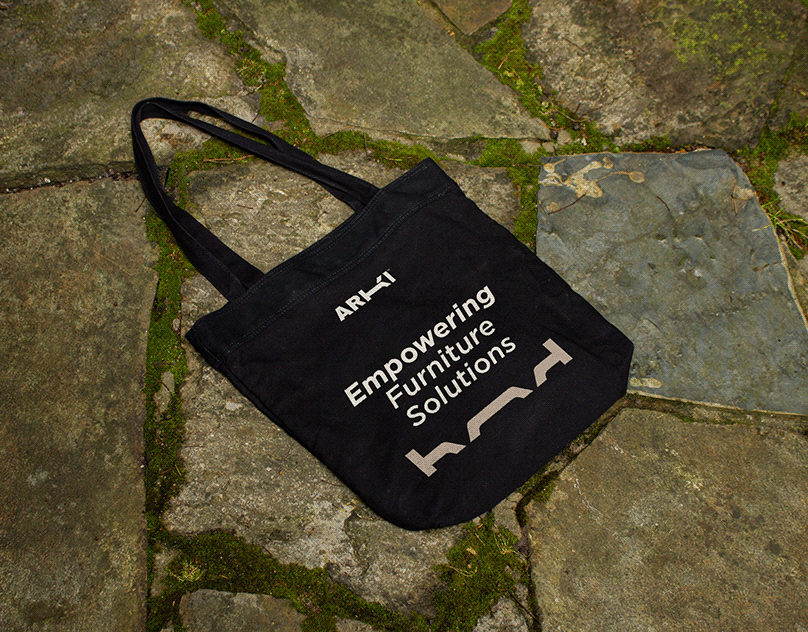
For the 2014-15 Lille Design for Change Challenge, we were tasked to tackle the concept of "mass catering" in Lille, France. Our approach was to encourage citizens to drink tap water instead of expensive, wasteful bottled water.
Lake to Lille is a mobile, interactive exhibit that builds trust and pride in Lille city water by taking students through the journey of tap water “from lake, to Lille.” By involving primary school students in a model process of water collection, filtration, and distribution, Lake to Lille engages themes of sustainability, economics, and community health, and creates lifelong tap water drinkers.
Lake to Lille is a mobile, interactive exhibit that builds trust and pride in Lille city water by taking students through the journey of tap water “from lake, to Lille.” By involving primary school students in a model process of water collection, filtration, and distribution, Lake to Lille engages themes of sustainability, economics, and community health, and creates lifelong tap water drinkers.
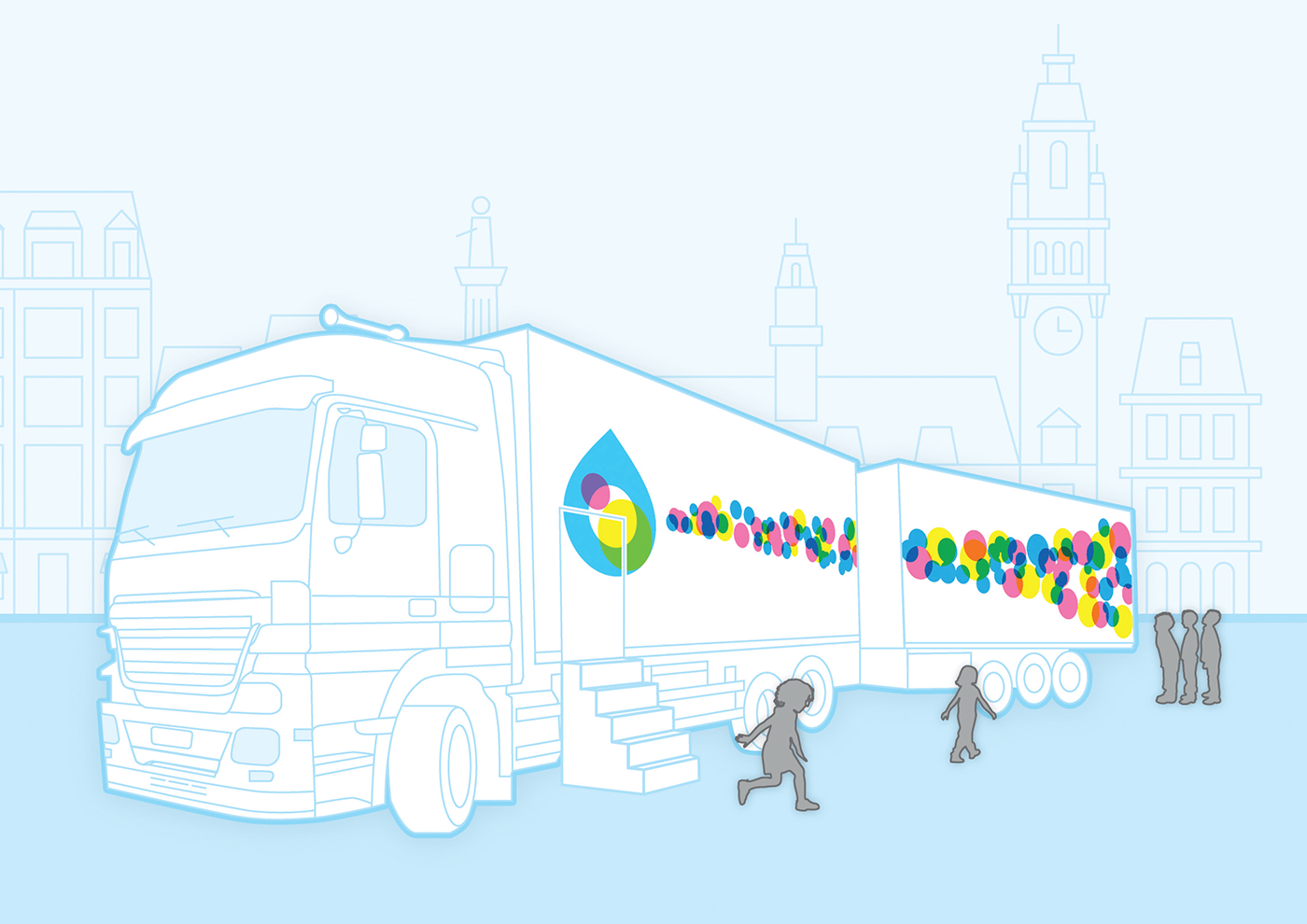

Our Solution
We proposed the solution of Lake to Lille: a mobile, interactive exhibit that builds trust and pride in Lille water by taking primary school students through the journey of tap water “from lake, to Lille.” The exhibit, contained in two trailers, driven by a biodiesel-fuled truck, travels from school to school and becomes an out-of-the ordinary experience for students ages 6-11.
We proposed the solution of Lake to Lille: a mobile, interactive exhibit that builds trust and pride in Lille water by taking primary school students through the journey of tap water “from lake, to Lille.” The exhibit, contained in two trailers, driven by a biodiesel-fuled truck, travels from school to school and becomes an out-of-the ordinary experience for students ages 6-11.
Once entering the exhibit, students travel through four rooms with playful, participatory exhibits that are metaphors for the stages of water treatment: (1) collection from nature, (2) extensive filtration in the treatment plant, (3) distribution through the city pipes, and (4) the many uses of water at home. Throughout the process, they discuss issues of sustainability, health, and why Lille tap water is of very high quality.
..............................................................................................................................................................
Collection
In the Collection phase, children enter from the rear door of the truck. They walk through a “lake” filled with balls that symbolically represent water. Blue balls signify clean water, while the purple, pink, yellow, and green balls represent impurities found in unfiltered water. Each set of colored balls is a different size.The students collect the water along with its “impurities” and bring it into the next stage, the “treatment plant.”
In the Collection phase, children enter from the rear door of the truck. They walk through a “lake” filled with balls that symbolically represent water. Blue balls signify clean water, while the purple, pink, yellow, and green balls represent impurities found in unfiltered water. Each set of colored balls is a different size.The students collect the water along with its “impurities” and bring it into the next stage, the “treatment plant.”

Filtration
In this phase, children are faced with four layers of transparent walls that represent different filtration processes. Each wall is a “filter” with its own set of holes. Students put the balls through these holes as long as they fit, but each wall has progressively smaller holes. By the end of the four layers of walls, the blue balls (clean water), are the only ones left. The walls have metaphorically cleaned the water. The children then carry the filtered water to the delivery phase.
In this phase, children are faced with four layers of transparent walls that represent different filtration processes. Each wall is a “filter” with its own set of holes. Students put the balls through these holes as long as they fit, but each wall has progressively smaller holes. By the end of the four layers of walls, the blue balls (clean water), are the only ones left. The walls have metaphorically cleaned the water. The children then carry the filtered water to the delivery phase.
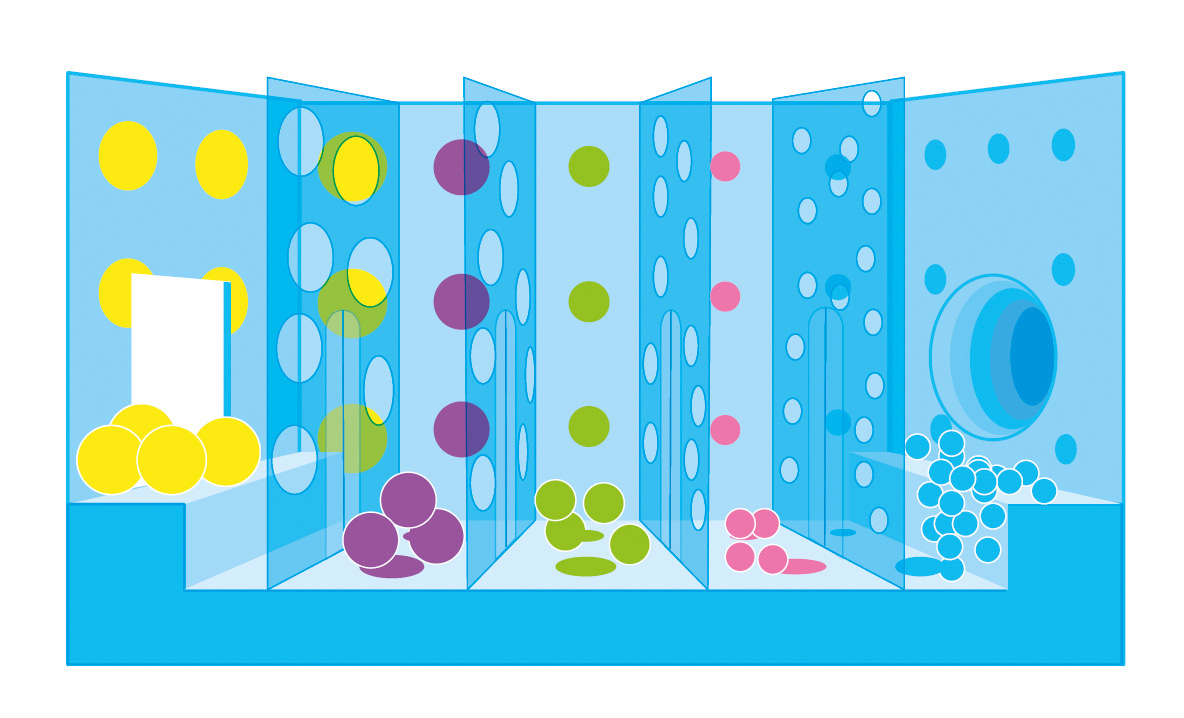
Delivery
Children slide into the delivery phase, where they pump the “water” through pipes and into Lille homes and businesses. Students race to see who can most quickly deliver the water balls.
Children slide into the delivery phase, where they pump the “water” through pipes and into Lille homes and businesses. Students race to see who can most quickly deliver the water balls.
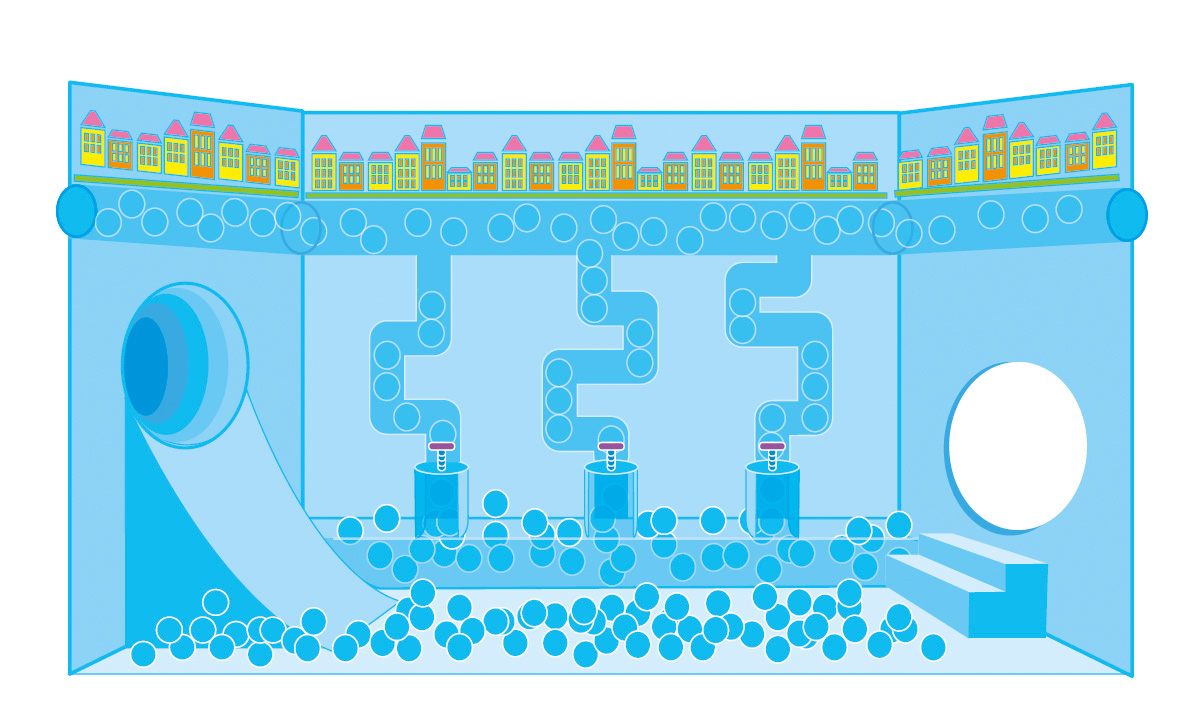
Water Use
In this last section, children enter the kitchen of a Lille home where they see how water benefits them in their daily lives. This gives them the opportunity to discuss tap water’s importance to the body, the community, and the planet. Each student recieves a gift of a reusable water bottle that they can use to drink tap water, as well as a poster of the Lake to Lille experience.
In this last section, children enter the kitchen of a Lille home where they see how water benefits them in their daily lives. This gives them the opportunity to discuss tap water’s importance to the body, the community, and the planet. Each student recieves a gift of a reusable water bottle that they can use to drink tap water, as well as a poster of the Lake to Lille experience.
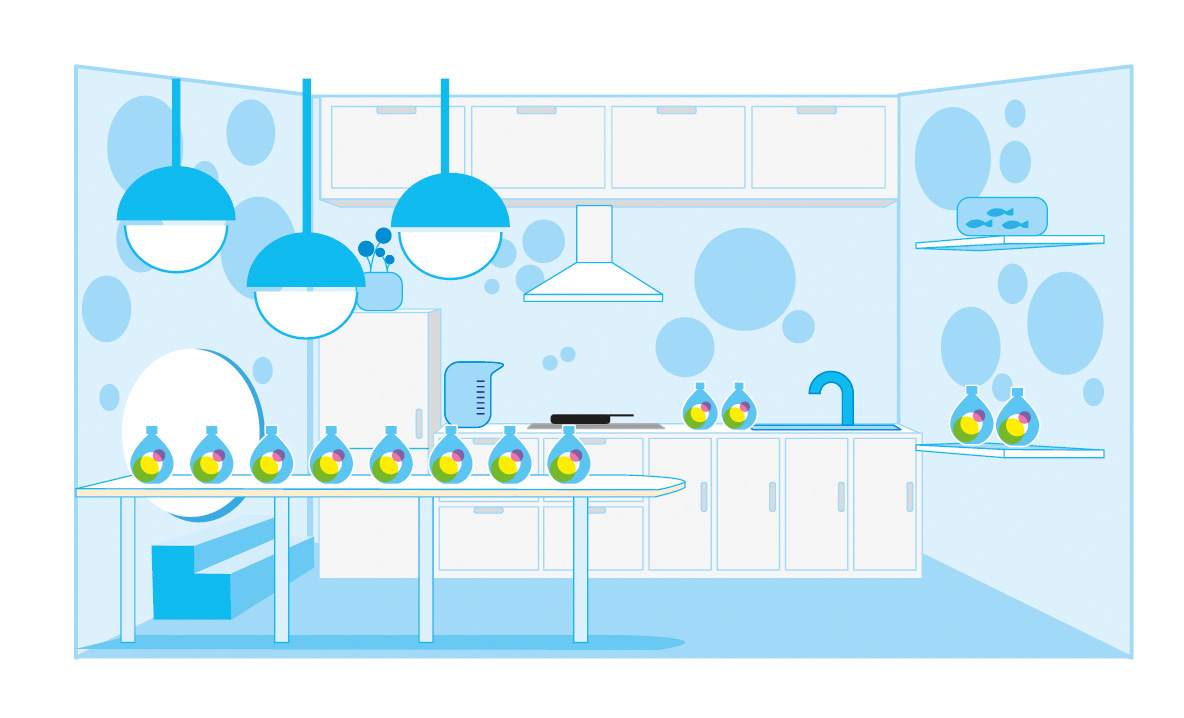
............................................................................................................................................................
